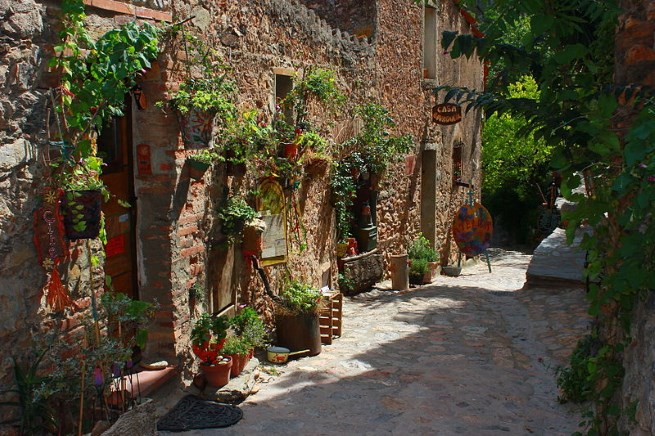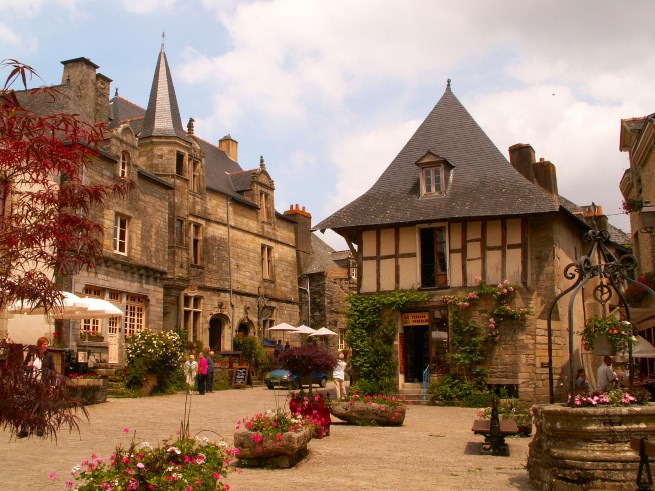Exploring the Most Beautiful Villages in France

We all think we’ve been to the most beautiful villages in France – and we all have our favourites – that effortlessly impart a deep sense of France à l’ancienne, of local life seemingly locked in time, of rural existence unhurried by modern pressures or the creeping onset of technology and progress. From Alsace to Provence, from Brittany to Dordogne, and from Loire to Languedoc, there are communities perched on hillsides, straddling rivers and beside the sea – often with a château or church as their original beating heart – where a profound pride in what has been inherited rubs off on us in an almost spiritual fashion. Yet to maintain a cultural and historical link to each village’s past, as well as to preserve the ancient stone so lovingly crafted into gorgeous buildings, the need a helping hand, not to mention a creative force to help promote their appeal to visitors. This is where the association Les Plus Beaux Villages comes into play.
The initiative
The story of the Most Beautiful Villages of France – an organisation which now counts as members 153 villages spread over 21 regions and 69 departements – began back in 1981. Charles Ceyrac, the Mayor of Collonges-la-Rouge in Corrèze (Limousin) found himself leafing through an eponymous Reader’s Digest book and realised that he could serve a cause close to his heart: by uniting some of France’s exceptional communes, he could both protect their heritage and provide them with a solution to rural depopulation. Within a year he had 66 like-minded fellow mayors on board and the association became a formal gatekeeper for these cherished rustic outposts.
The association was keen not to simply create either soulless ‘museum villages’ or ‘funfairs’, but rather to maintain their elegance and vibrancy with a strategy based on quality, reputation and development. “Our well-reasoned and passionate ambition is to reconcile villages with the future and to restore life around the fountain or in the square shaded by 100-year-old lime and plane trees,” says Councilmember Maurice Chabert, Mayor of Gordes in Vaucluse. The future is clearly as important as the past when it came to showcasing France’s loveliest rural destinations.
Planning your trip
So, what about the visitor experience? Firstly, the sheer geographic spread of these sites – over 21 regions and 69 départements – means that no matter where you are on holiday in France, the chances are that you will never be too far from a delightful rustic hotspot. Sometimes you may stumble quite by chance upon such a beauty, so keep an eye out for the brightly coloured green and red logo that normally accompanies the village’s name sign as you enter.

Rochefort-en-Terre, Brittany, Photo: Xavier Lansade / Les Plus Beaux Villages
If you prefer to be more organised in your holiday tour planning, the Plus Beaux Villages de France has introduced some innovations to fire the imagination. They have created themed visits based around the history of a heritage, the culture of a territory or terroir and the artisan skills of its inhabitants. Themes include art and handcrafts, discovery and nature, patrimony, romantic, sport and wellness and wine & gastronomy. This is perhaps the best way to get up close and personal with the characters and local institutions that make each village so special. Finally, a key tenet is to preserve the environment in and around each village.
One-off events are also a vital part of the Plus Beaux Villages calendar, so you might want to coincide a visit with a fun-filled wine market (an initiative of Rodemack in Moselle) or a craft day, which celebrates the inspiration provided by a village to artists and artisans. This was launched in 2009 at Sauveterre-de-Rouergue (Aveyron) when more than 80 artists, including 60 from other Plus Beaux Villages, showed off their skills and creations to more than 5,000 people over two days. There is a real sense of community and togetherness amongst member villages, in spite of their cultural and geographical differences.
[mrb]
More than a day trip
The provision of accommodation is another key factor in the association’s forward thinking, so expect to find some lovely B&Bs, chambre d’hôtes and quaint hotels in or near your preferred village. Restaurateurs and tour guides are another essential part of the mix when you seek to understand what makes a village tick, while the welcome is extended where possible to the visually handicapped, with sensory visitor circuits, visitor booklets in large character or braille as well as audio guides.
In summary, France’s Plus Beaux Villages are so much more than just places to enjoy on a day trip. They are part of France’s furniture, lovingly maintained and proudly presented. They represent the best of France, with one eye on the past and the other keenly trained on the future. Bonne visite!
Discover more about the member villages on Les Plus Beaux Villages website, where you will also find details of short breaks and a bookshop selling maps and tourist guides. You can also sign up to the association’s newsletter.
Share to: Facebook Twitter LinkedIn Email
Leave a reply
Your email address will not be published. Required fields are marked *



